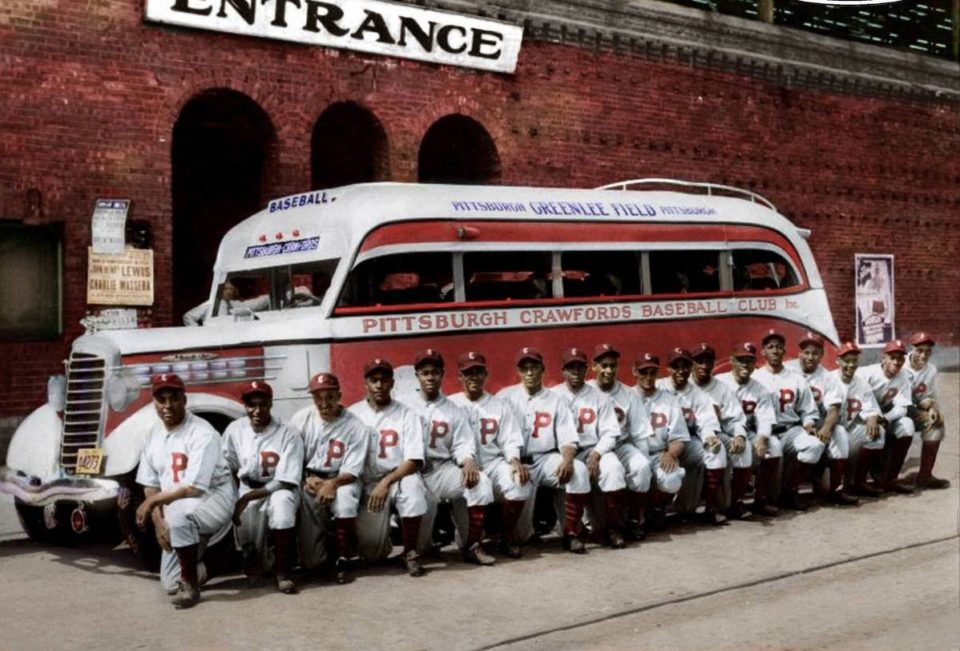Baseball History Comes Alive Now Ranked #2 by Feedspot Among All Internet Baseball History Websites and Blogs!
Guest Submissions from Our Readers Always Welcome!
Subscribe to my blog and get instant access to my two Free E-Books: “Memorable World Series Moments” and “Gary’s Handy Dandy World Series Reference Guide!”
The Pittsburgh Crawfords Photo Gallery
Click on any image below to view entire gallery:
- Pittsburgh Crawfords
- Satchel Paige at the Crawford Bar and Grill
- The rival Homestead Grays
- The rival Kansas City Monarchs
- Pittsburgh Crawfords
- Crawford team logo
- Crawford team jersey
- Pittsburgh Crawfords
- Josh Gibson
- Pittsburgh Crawfords
- Crawford team members on road with family.
- Crawfords souvenir poster from 1933
- 1934 Crawfords. Gibson, Paige, and Charleton are on far right.
- Gus Greenlee. owner of the Crawfords
- Manager Oscar Charleton addresses Rap Dixon, Josh Gibson, Judy Johnson, and Jud Wilson
- 1935 Crawfords, their only undisputed championship
- Cool Papa Bell with legendary manager “Candy Jim” Taylor
The Pittsburgh Crawfords
We’ve all heard that the Pittsburgh Crawfords in the 1930’s were one of the greatest teams of all time, with stars Satchel Paige, Josh Gibson, “Cool Papa” Bell, Judy Johnson, and Oscar Charleton, among others, making up the team’s core. If you’re like me, you probably didn’t know much more about them. So here’s a few words about the history of this great Negro League team:
The Pittsburgh Crawfords were named after the Crawford Grill, a club in the Hill District of Pittsburgh owned by Gus Greenlee. Satchel Paige and Josh Gibson often hung out there and it became one of black Pittsburgh’s favorite night spots. Black stars like Lena Horne and Bill “Bojangles” Robinson were some of the top-notched entertainers that the club regularly featured.
Greenlee bought the team in 1931.He had stepped into an organizational vacuum, following the demise of many of the major Negro leagues of the 1920s, including the Negro National League and the Eastern Colored League. Greenlee began his tenure as owner of the Crawfords by signing the top African-American star, Satchel Paige. The next year, 1932, Greenlee hired Oscar Charleston as playing manager, and added top Negro league stars Josh Gibson, Judy Johnson, and Cool Papa Bell. Other notable signings included William Bell, Rap Dixon, and Ted “Double Duty” Radcliffe. Initially playing as an independent club, the now-stacked Crawfords immediately established themselves as the best black team in the country.
In 1933, Greenlee founded a new Negro National League, with the Crawfords as charter members. The league was structured with a first-half winner and a second-half winner.The two teams played at the end of the season for the Negro National League pennant. The Crawfords narrowly lost the first-half title to the Chicago American Giants and the pennant that year was never officially decided. The next season, 1934, with Gibson leading the league with 16 home runs and Paige winning 20 games, the Crawfords were near the top of the overall standings, but won neither half, even though they had the best overall record.
In 1935 Paige skipped most of the Negro National League season to play for a semipro team in Bismark, North Dakota. Even without their ace pitcher, the Crawfords finally lived up to their promise, taking the first-half title with a 26–6 record, then defeating the New York Cubans in a close seven-game series for their only undisputed Negro National League pennant. Manybaseball historians consider this 1935 edition of the Crawfords to be the greatest Negro league team of all time, featuring the four Hall of Famers, Charleton, Bell, Gibson, and Johnson, plus left-handed pitcher Leroy Matlock, who won 18 games without a defeat.
In 1937, Paige led several Crawfords players, including Gibson and Bell, to the Dominican Republic to play for the dictator Rafael Trujillo’s team. The Crawfords plunged to fifth place out of six teams with a 12–16 record. They partly recovered the next season, finishing third with a 24–16 record, but, with the exception of the 41-year-old Charleston, whose playing career was nearly over, the heart of the old Crawfords’ team — Paige, Gibson, Bell — had all moved on to other teams.
The Crawfords might have survived these losses, but their attendance flatlined after the white members of the team’s board forced Greenlee to shut out blacks from jobs at Greenlee Field (ushers, ticket-takers, etc.). Greenlee Field was one of the few parks built and owned by a Negro league team. Greenlee then sold the club, Greenlee Field was demolished, and the Crawfords moved to Toledo, becoming the Toledo Crawfords, for the 1939 season, and then to Indianapolis, becoming the Indianapolis Crawfords for the 1940 season.
-Gary Livacari
Thanks for reading my post. Hope you enjoyed it! Before you leave, I hope you’ll consider:
-Viewing the other posts in my blog. Click “Home” icon on left to see display of other posts.
-Following me on any one of my social networks.
-Sharing to your favorite social media
-Leaving a comment…I love interacting with my readers!
-Subscribing for automatic updates
Photo Credits: American Photo Colorizing; “When the Game Was Black and White” by Bruce Chadwick; and Public Domain
Information: Excerpts edited from the Pittsburgh Crawford Wikipedia page.
Click “Home” icon on left to see display of all my articles. Follow us on Twitter: @Livac2
Visit our Facebook page: Old-Time Baseball Photos






















Hi Gary — didya notice: there’s someone missing from your colorized photo of the 1935 Crawfords.
Compare to the original b/w.
See that? Who’s that guy on the far right. Y’think it’s Gus Greenlee? Or maybe he’s behind the camera.